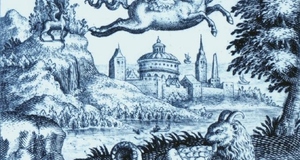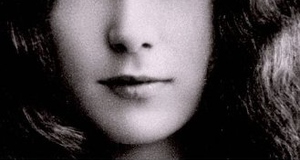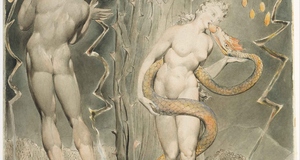Losing and Writing: Synonymous Art Forms for Poet Elizabeth Bishop
By
2010, Vol. 2 No. 01 | pg. 1/1
KEYWORDS:
Elizabeth Bishop, known for her reticent poetic style, reveals the secrets of her personal life through carefully wrought metaphors. In her villanelle, “One Art,” Bishop reveals the purpose of art and the significance of poetic form. In her poetry, Bishop often struggles fiercely against expressing her feelings, but in her intensely emotional villanelle, she allows her emotions to seep out and take on a poetic form. In “One Art,” Bishop’s seemingly casual tone masks chaotic, internal emotions relating to great loss, and while the feelings beg to erupt from the page, Bishop manipulates and confines them in the structured form of a villanelle, fashioning her pain into art. At the onset of the poem, Bishop’s tone appears relaxed and indifferent as she instructs her readers in mastering the all too necessary “art of losing” (line 1). Interestingly, her poetic voice takes on didactic characteristics as she urges readers to “lose something every day,” which hints at her own historical experiences with loss. Notably, she addresses the loss of inanimate objects and concepts before delving into far more serious items to lose. However, her initial yoking of keys and time quite unnerves readers early on in the poem. She links an object to an abstract notion in the same line of poetry and separates them only by a comma as she advises readers to “Accept the fluster / of lost door keys, the hour badly spent” (3-4). By connecting such unlike things, Bishop obliquely suggests that her losses far exceed the mere loss of keys or time; indeed, her profound suffering prevents her from discerning the difference between a lost item, potentially recoverable, and lost time, never recoverable. Moreover, her repetition of the phrase, “The art of losing isn’t hard to master” serves to validate her thought process throughout the poem and convince herself that losing becomes easier with time and practice. Clearly, however, the art of losing becomes far more personal and challenging for Bishop as the poem progresses. She begins with inanimate objects and intangible notions and uses them as steppingstones for things which become increasingly more difficult to lose. In the third stanza, Bishop tells readers to “practice losing farther, losing faster: / places, and names, and where it was you meant to travel,” but her specificity points to her own sense of loss for people and places (7-9). Her tone no longer seems jesting or casual; instead, the poem becomes ever more solemn and private. When Bishop writes, “None of these will bring disaster,” readers find “disaster” too strong a word when used in conjunction with lost keys and time (9). At this point, Bishop leaves her readers curious as to just what will bring about complete and utter disaster.In the fourth stanza, Bishop confirms the personal nature of the poem, in explaining, “I lost my mother’s watch” (10). The “I” finally appears in the poem, relating loss after loss. The allusion to her mother, in particular, reflects an acutely felt emotion of Bishop’s, since losing a sentimental object of her deceased mother represents losing one of the only surviving memories of her mother. Nevertheless, the voice of the perpetually reassuring survivor returns in the third line of the stanza, when Bishop once again reinforces her refrain. Although her emotions, along with the reader’s own feelings, seem to build up in this stanza, Bishop stays true to the poetic form of the villanelle in her rhyme scheme, repetition of the refrain, and ending of lines with words rhyming with either “master” or “intent.” The poetic structure reigns in her emotions, and Bishop controls her internal chaos and manipulates it into an art. The poet’s ability to order her poem relates to her feigned ability to control, or at least make sense of, her losses. Still, Bishop’s losses seem to ever increase, and readers begin to question the poet’s assumed ability to “master” her “disasters.” She loses “two cities,” “some realms,” “two rivers,” “a continent,” and still maintains that “it wasn’t a disaster” (13-15). Finally, in the last quatrain, Bishop begins to doubt the refrain which the strict form of the villanelle requires. Indeed, upon mentioning losing “you,” Bishop loses something else: her poetic authority. The reassuring voice falters as she recalls “the joking voice, a gesture / I love” (15-16). In placing the proclamation “I love” on a separate line, Bishop emphasizes the words, allowing them to stand alone with the feelings they evoke. Significantly, Bishop additionally alters her refrain to “It’s evident / the art of losing’s not too hard to master” (17-18). Clearly, Bishop endeavors to qualify herself, but her refrain weakens in this final stanza. She admits that losing love “may look like (Write it!) like disaster” (19). At the end of her poem, then, Bishop acknowledges that the loss of love is far too difficult to master, and in a final attempt to control the feelings breaking through the surface of the page, Bishop repeats the word “like” to delay the unavoidable and most devastating disaster: the loss of a person still deeply loved. The voice of the survivor emerges once more, however, in Bishop’s fierce intonation of “Write it!” (19). Indeed, Bishop’s villanelle succeeds in recovering her lost “realms” in establishing an everlasting place for her poetry in postmodern times through its conversion of wholly inexplicable losses into vast, unfathomable beauty.
Bishop, Elizabeth. "One Art." Poets.org. 17 Nov. 2009. Suggested Reading from Inquiries Journal
Inquiries Journal provides undergraduate and graduate students around the world a platform for the wide dissemination of academic work over a range of core disciplines. Representing the work of students from hundreds of institutions around the globe, Inquiries Journal's large database of academic articles is completely free. Learn more | Blog | Submit Latest in Literature |


















